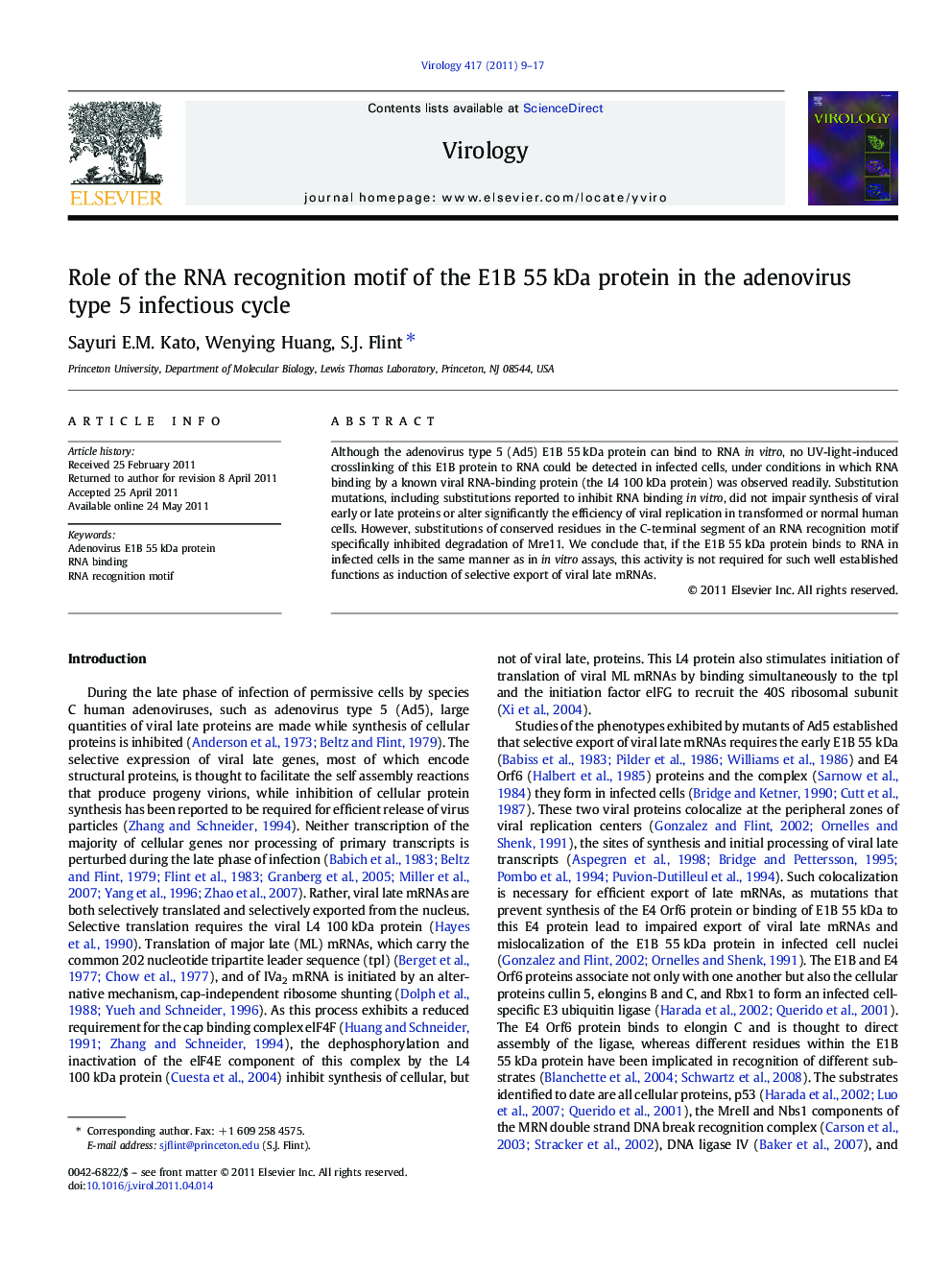| Article ID | Journal | Published Year | Pages | File Type |
|---|---|---|---|---|
| 3424619 | Virology | 2011 | 9 Pages |
Although the adenovirus type 5 (Ad5) E1B 55 kDa protein can bind to RNA in vitro, no UV-light-induced crosslinking of this E1B protein to RNA could be detected in infected cells, under conditions in which RNA binding by a known viral RNA-binding protein (the L4 100 kDa protein) was observed readily. Substitution mutations, including substitutions reported to inhibit RNA binding in vitro, did not impair synthesis of viral early or late proteins or alter significantly the efficiency of viral replication in transformed or normal human cells. However, substitutions of conserved residues in the C-terminal segment of an RNA recognition motif specifically inhibited degradation of Mre11. We conclude that, if the E1B 55 kDa protein binds to RNA in infected cells in the same manner as in in vitro assays, this activity is not required for such well established functions as induction of selective export of viral late mRNAs.
► Functions of the adenoviral E1B 55 kDa protein RNA recognition motif (RRM) in vivo. ► RNA binding by the E1B 55 kDa protein cannot be detected in infected cells. ► RNA recognition motif substitutions do not perturb viral late gene expression. ► The RRM contributes to substrate recognition by the adenoviral E3 ubiquitin ligase.
